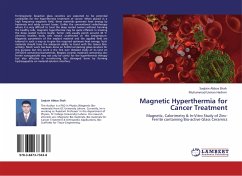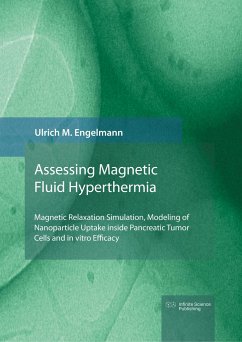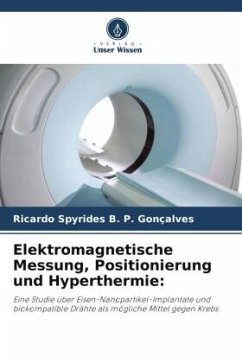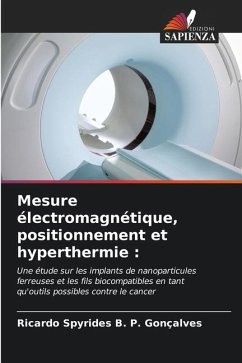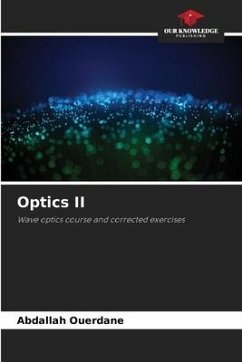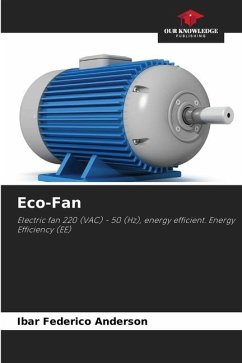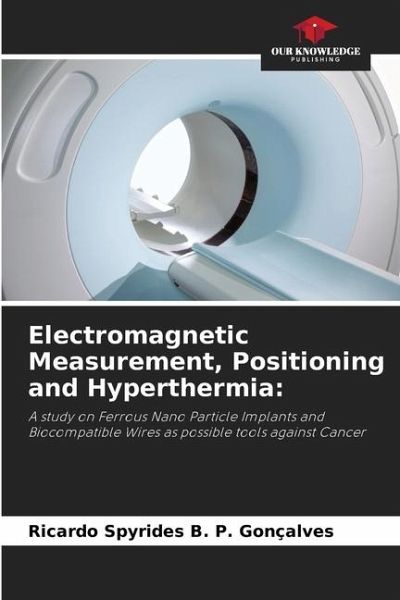
Electromagnetic Measurement, Positioning and Hyperthermia:
A study on Ferrous Nano Particle Implants and Biocompatible Wires as possible tools against Cancer
Versandkostenfrei!
Versandfertig in 6-10 Tagen
19,99 €
inkl. MwSt.

PAYBACK Punkte
10 °P sammeln!
This article aims to show the reader new technologies in cancer treatment, which are gradually becoming a reality. Magnetic hyperthermia consists of applying magnetic fields to tumours in an attempt to provoke apoptotic cell renewal, a less painful and more natural way of treating cancer. To focus the electromagnetic fields on a tumour and promote heating from the inside out, the author analyses different types of biocompatible implants to be inserted into the tumour site to serve as targets. From sutures currently used in surgical procedures to metallic nanoparticles, the author analyses the ...
This article aims to show the reader new technologies in cancer treatment, which are gradually becoming a reality. Magnetic hyperthermia consists of applying magnetic fields to tumours in an attempt to provoke apoptotic cell renewal, a less painful and more natural way of treating cancer. To focus the electromagnetic fields on a tumour and promote heating from the inside out, the author analyses different types of biocompatible implants to be inserted into the tumour site to serve as targets. From sutures currently used in surgical procedures to metallic nanoparticles, the author analyses the possibility of using different biocompatible materials in this technique. In addition, the author also suggests the electromagnetic instrumentation required for heating, commenting on the possibility of using aerospace technology to promote greater efficiency in the process. This work served as the Final Work for the Degree in Electrical Engineering, earning the author the title of Electrical Engineer.





